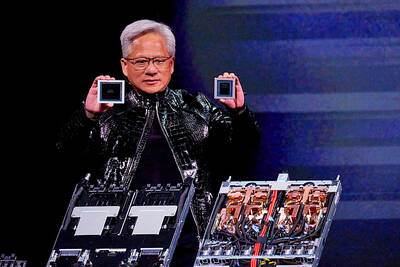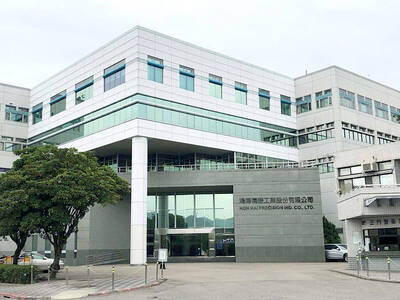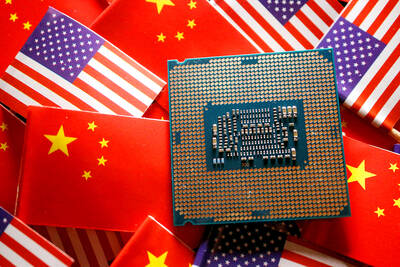V Air (威航), a budget airline fully owned by TransAsia Airways Corp (復興航空), yesterday announced plans to bow out of the local market to curb losses due to sharpening competition.
The carrier is to stop operations in October, allowing TransAsia Airways to better consolidate its resources and stem mounting losses.
The announcement came after TransAsia’s board of directors approved the decision.
“The move is part of the company’s long-term transformation plans to optimize resource utilization and lower operating costs,” TransAsia chairman Vincent Lin (林明昇) said in a statement following a board meeting.
Lin also pledged to prioritize improving flight safety standards and to look after the interests of affected employees.
The company’s business has taken a hit after two fatal accidents involving TransAsia aircraft in July 2014 and February last year.
After absorbing its subsidiary, TransAsia hopes to become a versatile carrier capable of distinguishing itself from low-budget competitors, company spokeswoman Amy Chen (陳逸潔) said.
“We aim to provide passengers with different options in terms of in-flight meal variety and check-in luggage allowances, as we position the company somewhere between the budget and full-service market segments,” Chen said.
The firm plans to release an updated business plan soon, she said.
V Air, which launched in December 2014, last year recorded losses of NT$450 million (US$14.31 million at the current exchange rate). Its bottom line continued to deteriorate, with aggregate losses in the first half of this year exceeding NT$900 million.
Amid intense competition, V Air burned through more than half of its founding paid-in capital of NT$2 billion, company data showed.
V Air has four aircraft, two of which were added to its fleet in January and March, and covers routes to nine destinations, including Thailand, Japan and South Korea.
TransAsia said that it would take over two V Air routes to Chiang Mai, Thailand, and Fukuoka, Japan, and pledged that affected passengers would be reimbursed.
The company added that V Air’s most popular destinations are Bangkok and Chiang Mai, with flights to the destinations operating at 77 percent capacity on average.
TransAsia reported a net loss of NT$439 million for the first quarter, easing from a net loss of NT$1.16 billion in the previous quarter.
Sales retreated significantly from NT$10.58 billion in the fourth quarter of last year to NT$3.2 billion in the first quarter of this year.
TransAsia shares yesterday gained 0.95 percent to NT$6.36, Taiwan Stock Exchange data showed.

Nvidia Corp chief executive officer Jensen Huang (黃仁勳) on Monday introduced the company’s latest supercomputer platform, featuring six new chips made by Taiwan Semiconductor Manufacturing Co (TSMC, 台積電), saying that it is now “in full production.” “If Vera Rubin is going to be in time for this year, it must be in production by now, and so, today I can tell you that Vera Rubin is in full production,” Huang said during his keynote speech at CES in Las Vegas. The rollout of six concurrent chips for Vera Rubin — the company’s next-generation artificial intelligence (AI) computing platform — marks a strategic

Shares in Taiwan closed at a new high yesterday, the first trading day of the new year, as contract chipmaker Taiwan Semiconductor Manufacturing Co (TSMC, 台積電) continued to break records amid an artificial intelligence (AI) boom, dealers said. The TAIEX closed up 386.21 points, or 1.33 percent, at 29,349.81, with turnover totaling NT$648.844 billion (US$20.65 billion). “Judging from a stronger Taiwan dollar against the US dollar, I think foreign institutional investors returned from the holidays and brought funds into the local market,” Concord Securities Co (康和證券) analyst Kerry Huang (黃志祺) said. “Foreign investors just rebuilt their positions with TSMC as their top target,

REVENUE PERFORMANCE: Cloud and network products, and electronic components saw strong increases, while smart consumer electronics and computing products fell Hon Hai Precision Industry Co (鴻海精密) yesterday posted 26.51 percent quarterly growth in revenue for last quarter to NT$2.6 trillion (US$82.44 billion), the strongest on record for the period and above expectations, but the company forecast a slight revenue dip this quarter due to seasonal factors. On an annual basis, revenue last quarter grew 22.07 percent, the company said. Analysts on average estimated about NT$2.4 trillion increase. Hon Hai, which assembles servers for Nvidia Corp and iPhones for Apple Inc, is expanding its capacity in the US, adding artificial intelligence (AI) server production in Wisconsin and Texas, where it operates established campuses. This

US President Donald Trump on Friday blocked US photonics firm HieFo Corp’s US$3 million acquisition of assets in New Jersey-based aerospace and defense specialist Emcore Corp, citing national security and China-related concerns. In an order released by the White House, Trump said HieFo was “controlled by a citizen of the People’s Republic of China” and that its 2024 acquisition of Emcore’s businesses led the US president to believe that it might “take action that threatens to impair the national security of the United States.” The order did not name the person or detail Trump’s concerns. “The Transaction is hereby prohibited,”